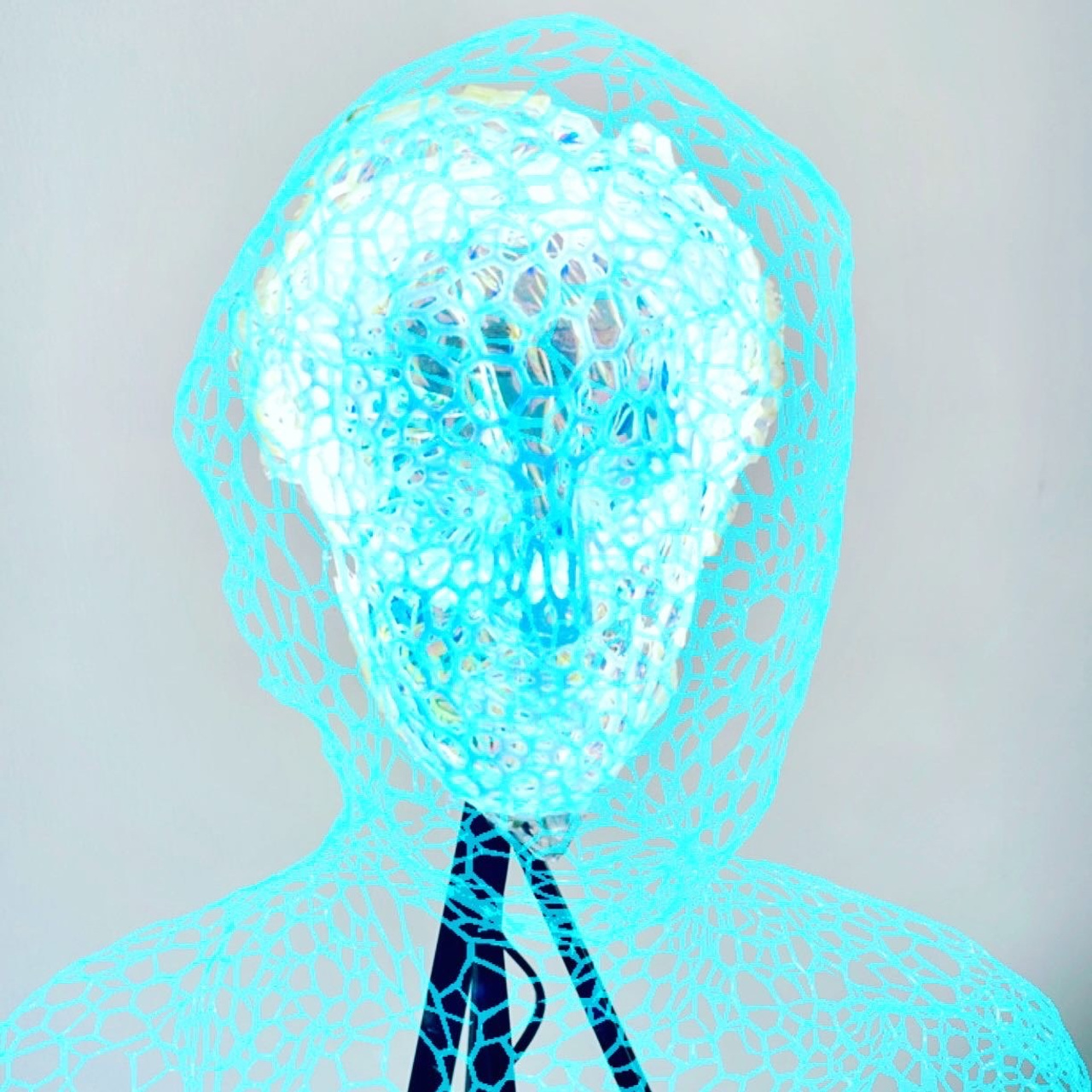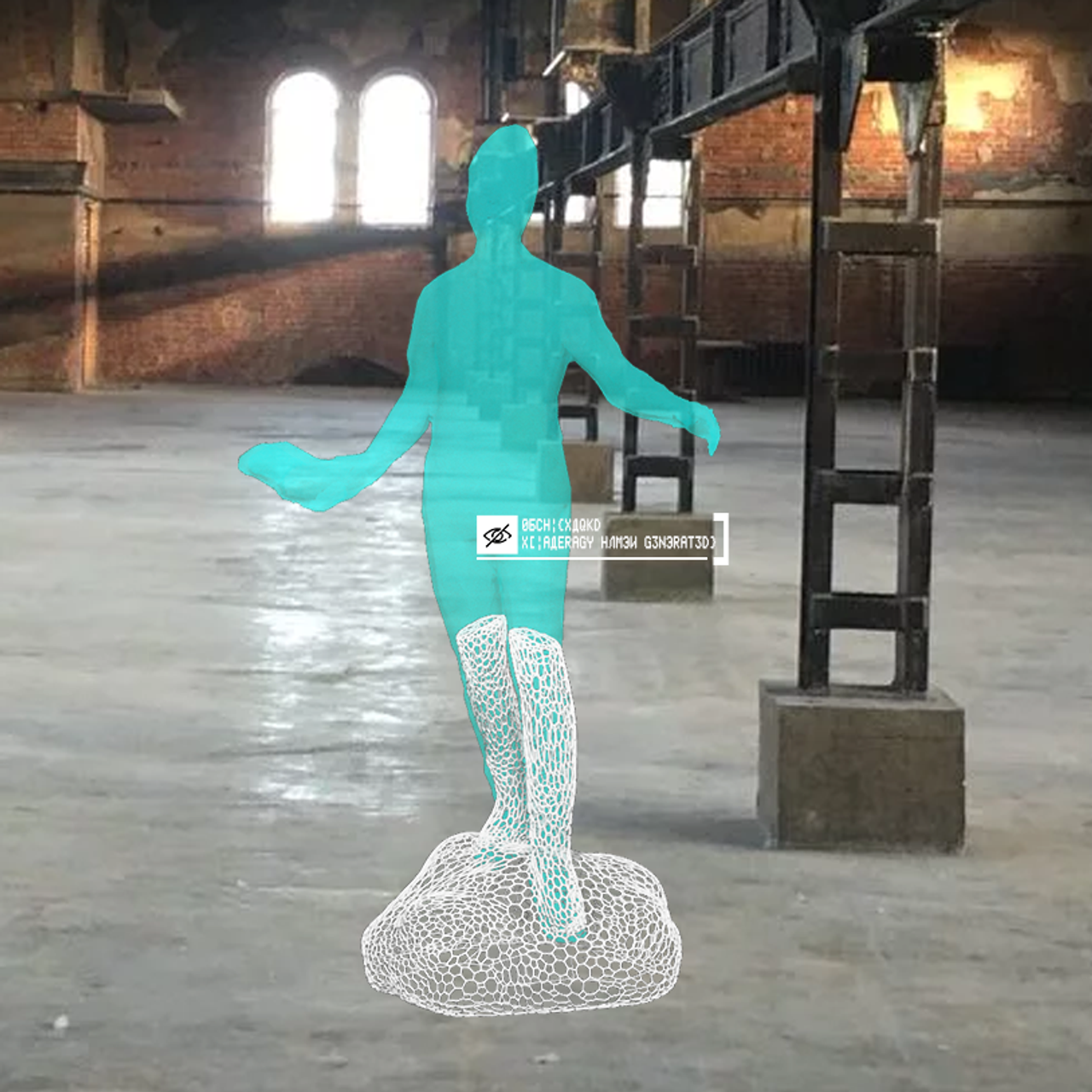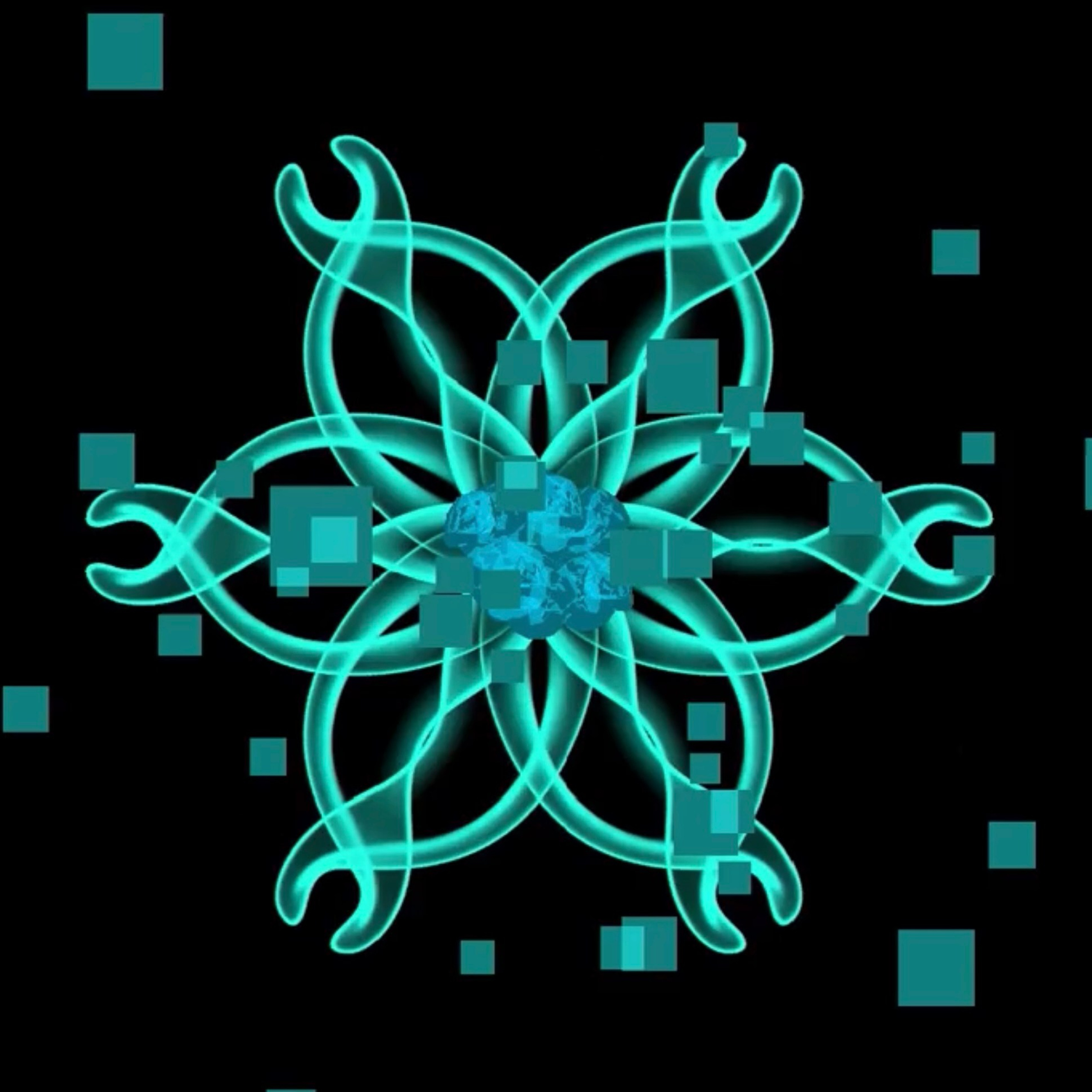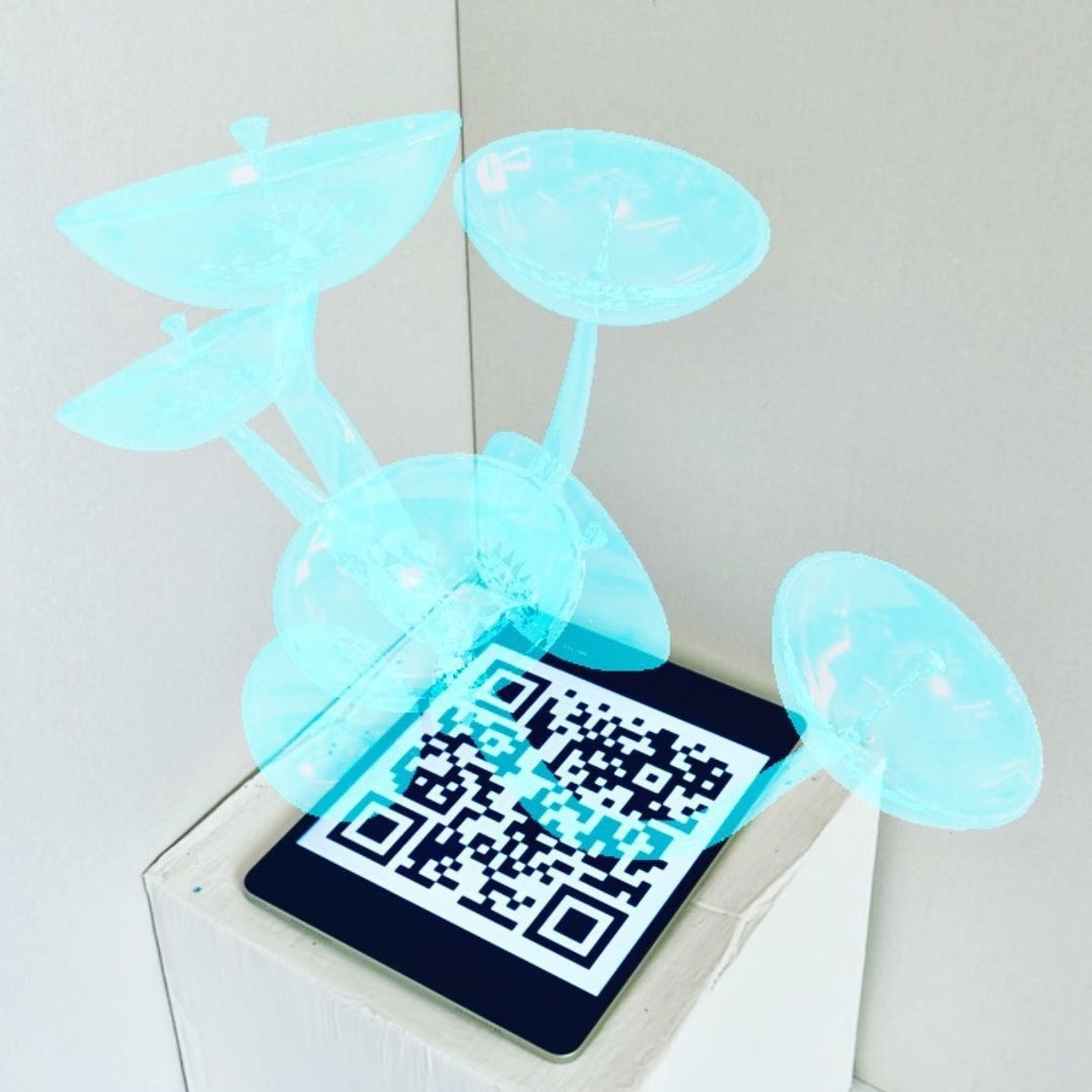Augmented reality
The use of augmented reality in contemporary art is intended to be another strategy for the decarbonization of art aimed at reducing its ecological footprint.
In addition, this medium draws attention to an interesting circumstance of modern life: in our world, a person essentially exists in two realities simultaneously — in a concrete, physical one, and a virtual one, where virtual objects can interact with real space.
Augmented reality embodies the blurriness of the boundaries between these two spaces, blurring the difference between what we considered traditional reality and modern digital reality. The issue of knowing and defining the time of existence in these two worlds and the boundaries of the real body, which explores and interacts with both the physical and virtual world, raises a host of unresolved and exciting questions.
In this context, projects that use augmented reality as a medium become a powerful tool for research in the digital age. They are designed to provide an understanding of the new contours and boundaries of human existence in independently created and experienced spheres of reality. Their focus is both the fascinating task of exploring new horizons of the virtual and the crucial need to remain conscious and responsible participants in the real, physical world.







